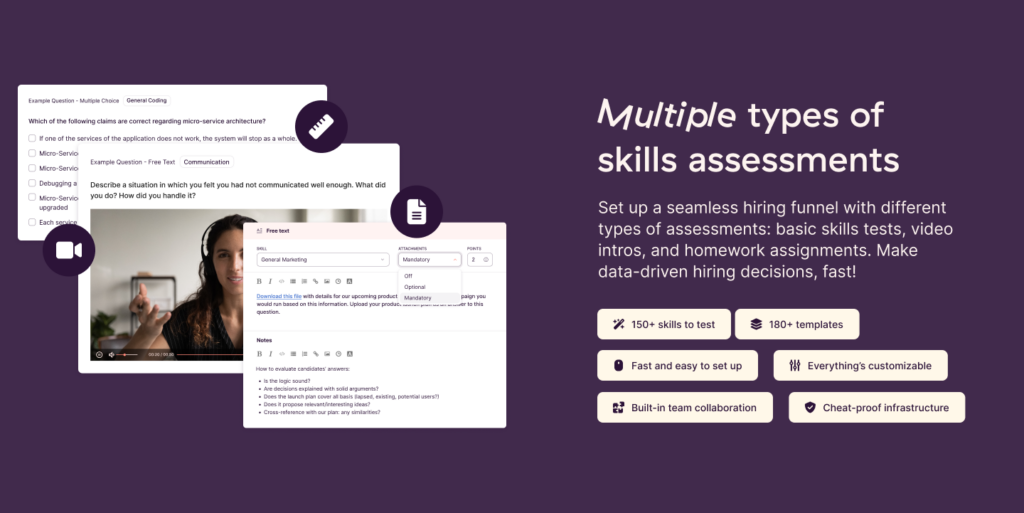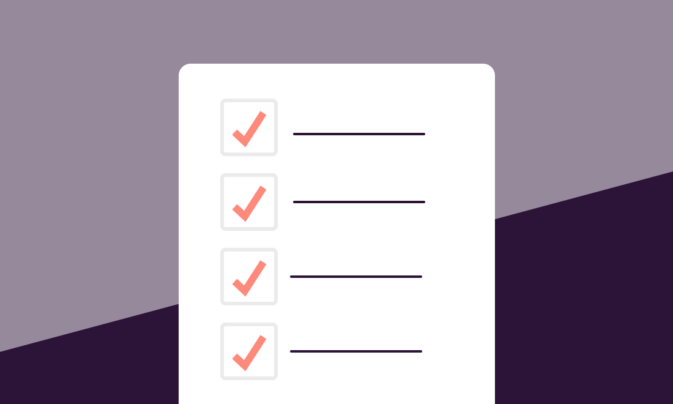Nobody knows what the future holds, but planning makes navigating uncertainty much easier. This is especially true in business, where emerging technologies often leave companies stranded, and market shifts make it hard to parse ideal staffing levels.
Without a crystal ball to look into the future and know how the labor market might skift or how to prioritize talent needs, the next best thing businesses have at their disposal is workforce planning, which helps anticipate trends and positions organizations to handle change.
While we don’t have a crystal ball or any fairy dust to help you magically implement workforce planning, we do have this guide, which introduces the ins and outs of the process and offers a step-by-step breakdown of operational workforce planning.
TL;DR — Key Takeaways
- Workforce planning is the strategic process of aligning an organization’s workforce with its business goals, ensuring the right people are in the right roles at the right time.
- Workforce planning helps organizations anticipate and address future talent needs, optimize resource allocation, increase productivity, improve employee engagement, and mitigate financial risk (among other benefits!).
- Workforce planning typically involves five key phases, including identifying strategic objectives, conducting a workforce supply and demand analysis, performing a skills gap analysis, developing and implementing a workforce plan, and monitoring and revising the plan as needed.
- Some best practices for workforce planning include understanding the organization’s strategic goals, involving key stakeholders, using data for demand and supply planning, and relying on workplace planning tools like the 9-box grid for accurate talent analysis.
What is workforce planning?
Workforce planning analyses the supply and demand of talent, enabling organizations to source the skills they need to meet critical goals. Analysts typically assess current skill levels and forecast future needs. They use that analysis to create long-term strategies to avoid skill gaps and ensure operational success.
This matters because 69% of HR professionals surveyed by Wiley at the beginning of 2023 said their organization has a skills gap, up from 55% in a similar survey in 2021. LinkedIn’s 2023 Workplace Learning Report revealed that skill sets for jobs have changed by around 25% since 2015. By 2027, this number is expected to double.

While this is naturally a part of human evolution (things change!), technology these days is evolving at such a rapid rate that businesses are having to constantly adapt to survive. After all, you can’t integrate innovative technologies without appropriate employee skills.
Companies that implement smart planning methods know their internal skill levels and provide employees with routes to boost their skills. They have systems in place to find suitable recruits if needed and reduce their risk of being blindsided by the pace of change.
Strategic talent management applies across virtually all sectors and business sizes. However, planning systems vary, with different strategic roles and features depending on business goals.
Example #1: eCommerce retailer moving into video marketing
A traditional online retailer wants to expand into marketing its products on TikTok or Snapchat but lacks the skills to produce professional videos or analyze and optimize its social media marketing efforts.
With the right planning, workforce planners can source the skills required on a phased basis. The retailer can try a few channels or approaches and assess whether video promotion works for them.
As part of the process, managers may also need to reshape the organization’s leadership structure to add video marketing and social media expertise.
Example #2: Financial analysts remaining competitive
A financial analyst called “Money Matters” processes large amounts of data and complies with strict regulations. However, its business plan recommends integrating AI finance tools to remain competitive.
Strategic planning would allow the HR team to identify skills like AI or machine learning expertise as must-have skills for new hires. This ensures the company is hiring compliance professionals to ensure AI analysis adheres to industry regulations.
7 benefits of workforce planning
Listen, we get it — implementing enterprise-wide workplace planning strategies is a massive undertaking. To help justify the heavy lifting, it’s helpful to be clear about the benefits. That way, you can set metrics for success and sell the project to departmental managers and executives.

1. Prepare for the future
Companies that anticipate the future are well-placed to shape it. Strategic workforce planning allows forward-thinking companies to stay ahead of the curve while competitors struggle, and it does so in a few ways.
Namely, the workforce planning process helps you forecast future labor needs. For instance, a fashion label might want to use AI market analysis to make flexible deliveries to global markets. Workforce planning lets the label recruit coders and engineers to meet that need and smoothly transition from older marketing systems.
It’s not just about how many employees you’ll need to handle future workloads, though; it’s about the skills they need to have to help the organization succeed. Workforce planning contributes to future success by dealing with skills gaps that plague modern companies.
The World Economic Forum’s Future of Jobs report suggests that 44% of employee skills will be irrelevant within five years. Workforce planning allows you to identify areas of weakness and strategically plug those gaps.
Finally, workforce planning boosts flexibility when dealing with sudden labor demand or supply changes. The “Great Resignation” from 2019 to 2023 peaked when an unprecedented 4.5 million people quit their jobs in one month. In tight labor markets like that, workforce plans help, as they include contingency plans to replace workers or upskill staff to keep them on board.
2. Decrease hiring costs
The average new hire costs companies between $4,000 and $16,000. That number increases drastically if your hiring process fails (resulting in high employee turnover rates or a bad hire) and you need to re-advertise positions or use more costly methods like external agencies.
Fortunately, workforce planning processes reduce the cost of hiring in several ways.
Targeted recruitment efforts
Well-planned recruitment campaigns attract candidates with the skills needed to meet strategic goals. Companies that plan are less likely to hire reactively, meaning they can carefully fill positions and avoid costly mistakes.
Leverage internal talent
According to PWC, only 40% of companies use upskilling in their recruitment strategies. Gallup reports that 57% of US workers want to upskill, while 65% see upskilling opportunities as a major draw when seeking a new employer. With strategic workforce planning, you can easily identify employees with the chops to take on new roles.
Reduce employee turnover
Workforce planning helps control turnover and retain high-value employees, as it allows companies to strategically match individuals to roles fitting their skills. With the right plan, you can create promotion routes that meet internal demand for career opportunities and encourage workers to stick around instead of looking elsewhere.
3. Improve HR efficiency
A strategic workforce plan improves HR efficiency, allowing professionals to create streamlined processes that meet core goals. There are four key ways that planning contributes to efficiency:
Analytical processes allow HR teams to create an ideal candidate profile for each role. They can assess the outstanding performers in each department and seek recruits with similar strengths.
Workforce analyses align recruitment with business aims. HR teams can integrate core competencies into job ads or internal talent searches, ensuring every hire meets the talent needs of the company.
Strategic planning identifies redundancies within the business organization. Roles and responsibilities may overlap, resulting in duplicated workloads. Operational workforce planning eliminates these overlaps and boosts efficiency.
Workforce planning enables efficient resource allocation. HR teams can assign the ideal personnel to projects. Companies can scale up teams without compromising staffing elsewhere in the organization.

4. Align HR with business goals
Workforce planning aligns HR with accounting, marketing, IT, and product development departments. As a result, companies can leverage data-driven insights to reshape the workforce as business goals shift. Proactive training programs plug talent gaps.
The implications of that are huge, especially when you consider the sheer number of companies making massive digital transformations or moving from office-based to hybrid working models.
Verizon suggests that 75% of managers see upskilling digital skills as essential, but making digital transitions and staying in tune with business goals is only possible with strategic thinking.
5. Improve resource allocation
Every extra hire adds to the wage and benefits bottom lines, while bad hires damage productivity and add hidden costs that impact company turnover. Planning tools help by identifying areas of overstaffing or underutilization.
For instance, in 2022, retailers reported overstaffing issues after taking on too many workers to cover COVID-19 absences in years prior. Workforce planning identifies future needs and helps avoid overstaffing situations before mass layoffs materialize.
Underutilization applies when companies are unable to capitalize on employee capabilities. As many as 33% of workers feel underutilized at work, and a smart company implementing workforce planning would better understand employee skills and either recommend training or reshape roles to suit those skills.
6. Increase employee retention rates
Replacing employees is expensive. Estimates vary, but hiring new staff usually costs between half and two times the salary of an existing employee. Given those numbers, maximizing retention rates should be a core business goal.
Workforce planning can help you achieve that goal by identifying growth opportunities for existing staff. This is great for your business, sure, but ultimately it’s about the employees — individuals who feel valued are more likely to stay, and workforces that feel valued tend to work more productively.
HR teams can use workforce planning to create personal development plans for every employee. Entry-level workers should see a route to becoming business leaders. If they see a dead end, they will soon look elsewhere.
7. Facilitate succession planning
Succession planning ensures companies can smoothly replace high-value employees. However, the problem is that business leaders rarely prepare their successors. Workplace planners supply a solution, allowing HR teams to assess internal talent and train high-potential employees to take on more responsibility.
Succession planning also protects institutional knowledge. Training, experience, and tools like mentoring prepare employees for senior roles. This way, critical knowledge passes from person to person without difficult and disruptive interim periods.
5 key elements of workforce planning
Effective workforce planning requires a systematic approach to identify objectives, analyze existing skill levels, and implement ongoing recruitment plans. The exact mix and order of steps varies, but we like to use the five-step process outlined by the US Office for Personnel Management (OPM).

1. Identify strategic objectives
At the start of the process, companies need clarity about their strategic aims. HR teams should link every aspect of recruitment and upskilling to your organization’s strategic plan. What is your long-term business strategy? What metrics do HR professionals need to track to understand recruitment or training needs?
At this stage, it makes sense to consult managers across all departments. For example, digital marketers may supply metrics about conversion rates or lead generation. Customer service teams may advise about tracking customer satisfaction or return rates.
Every department has something to contribute to strategic workforce planning. Use the knowledge you gather to understand strategic objectives. These objectives should guide your workforce plan when it comes into force.
2. Conduct a workforce supply and demand analysis
Workforce supply and demand analysis assesses the wider business environment, analyzing which skills are in demand and hard to source. The analysis should tell you:
The skills you possess within your organization
The type and quantity of skilled workers you will need in the future
Different scenarios based on market changes, business growth, and emerging technologies
Tracking workforce supply and demand helps you plan for long-term labor costs and goals. For example, the BLS reports that the US workforce is aging while the size of the workforce is flatlining. This suggests that finding graduate employees may be harder than upskilling older workers.
Combine macro-scale data with sector-specific data to gain perspective. For instance, in 2023, some sectors experienced unique shortfalls, and some had exceptional potential for AI-based disruption, with McKinsey suggesting that office support and customer service are particularly vulnerable.
3. Perform a skills gap analysis
The next stage in the workforce planning process is analyzing skills gaps. These gaps occur when current workforce skills aren’t sufficient to achieve an organization’s future goals. When carrying out a skills gap assessment, personnel experts should:
Assess current workforce skills. If necessary, carry out skills assessments to determine the competence of each individual.
Forecast future skill requirements based on industry trends. Build long-term career plans based on upskilling to adapt to those trends.
Create a profile for each worker (often called a skills map) that lists their skills and identifies potential areas of improvement.
Agree on personal development plans with employees, ensuring all training fits the core business strategy.
Identify roles you can only fill externally. Create skills-based recruitment processes that select candidates with skills to take the company forward.
Prioritize urgent skill requirements. Meet immediate staffing needs to create a solid foundation and schedule a transition phase before the long-term strategic plan goes into action.

4. Develop and implement a workforce plan
After analyzing gaps in skills, finalize a workforce plan. This plan covers the recruitment needs of the entire organization. It defines specific skills-related objectives and identifies targets for the following:
Ideal recruitment levels. This may include scenarios based on different revenue forecasts or external conditions.
Training employees. Train current employees based on future skill requirements through projections of skill gaps.
Developing personnel. Employees should have pathways to improve their skills, take on new responsibilities, and be a part of building the organization.
An effective workforce strategy does more than maintain skill levels! It also makes companies more attractive places to work as potential employees can see routes to advancement through skills improvements and internal mobility opportunities.
5. Monitor, evaluate & revise
From the start, planners should set evaluation criteria to determine whether the strategy works as designed. Tracking employee turnover and job satisfaction demonstrates that your strategy is working properly. Ideally, you should see the turnover rate drop and job satisfaction rise.
Other tracking metrics include time and cost-to-hire. Well-planned recruitment efforts should drive both metrics as low as possible. HR teams can also factor in business metrics like revenue per employee or productivity statistics as needed.
The bottom line? Workforce planning should be dynamic and agile, not static. Adapting to the ever-changing economic environment is all-important, especially in the wild, wild world we live in today.
What are the 7 R’s of a strategic workforce planning process?
The process above sums up a typical workplace planning strategy, but not everyone is process-oriented (and that’s okay!). In our experience, the 7 “Rs” model works just as well for people who prefer conceptual thinking.
These 7 principles will guide you as you analyze recruitment needs, source workers, and upskill existing talent. Feel free to apply them at every stage of the OPM process to improve your focus and cover every base as you maintain your skills base.

1. Right people
The right people are experienced and skilled but have the values and personalities to fit your company culture. It’s important to build strategies that encompass all of these factors. That way, you have a better chance of unearthing gems.
2. Right skills
Assess current skill levels and map out scenarios for future skill requirements. Hire the right talent by implementing skills-based hiring. Unlike hiring based on experience, skills-based hiring gives hiring teams a sense of the exact skills each new hire possesses and how those skills translate into job success.

3. Right shape
Does your organization have the right business structure? How do power and information flow within the organization? Do departments work well together, and is there scope for cross-functional teams? Determine whether your organizational structure fosters good communication, effective collaboration, and well-informed decision-making. If not, you may need to make changes.
4. Right size
Carry out workforce demand forecasting to establish estimates for company growth. Consider concrete influences like seasonality and underlying growth rates, but model unpredictable factors like labor supply, disruptive tech (such as AI), or economic recessions. Use these projections to scale up employee rosters before understaffing becomes an issue or trigger hiring freezes before growth dips.
5. Right time
Deciding when to adjust your workforce is another critical planning challenge. If you know that demand will peak or dip, include those trends in your recruitment timeline. It might also help to set contingency plans when specific conditions apply. For instance, you may need freelancers to generate marketing content for seasonal sales.
6. Right place
How are your employees distributed? Are your workers ideally located to support your business strategy? Do you need to add new offices or regional freelancers? More companies are finding remote-first working models as the best way to expand across national boundaries and access top talent while improving employee satisfaction and workplace flexibility.
7. Right cost
Finally, “right cost” refers to achieving a solid return on investment. Whatever mix of recruitment, personal development, or training you use — analyze its ROI. Some basic principles to follow here:
Your wage bill should not increase when revenues dip (apart from exceptional circumstances).
Improvements in staff skills should translate into higher profits. Assess training programs to ensure they deliver skills that meet your core business objectives.
Staff wages should align with industry benchmarks unless you out-compete similar firms by hiring more productive employees.
On the recruitment side, the cost-per-hire should fall as you apply better talent acquisition strategies. If not, something’s going wrong at some point in the process.
Whatever you’re doing, and however you’re analyzing the impact of your efforts, ensure you’re using workforce planning to identify unique ways to cut costs over the short and long term.
The best workforce planning tools
Now, how do you pull all of this information together to devise an effective workforce planning strategy? That’s what workforce planning tools are for!
Most workforce planning tools tend to fall into a few categories, like maps and templates, but all are designed for use during the planning process. Here are four we suggest starting with for broader workforce planning efforts.
Strategic workforce planning map
Strategic workforce planning maps are employment models that connect workforce management to other strategic business objectives. They start by prompting you to identify organizational needs, such as expanding markets, retaining customers, or building brand awareness. They then help you visualize how workforce planning can contribute to these strategic aims.
The core idea behind strategic workforce planning is aligning HR with organizational goals. Strategic maps detail how roles, skills, and competencies contribute to business aims and include visualizations of current and future workforce needs.
For example, a travel services company may shift its strategic direction from human to AI-powered customer service and re-allocate employees to managing clients or developing destinations. In this case, the strategic map would model ways to add AI skills and retrain the existing workforce.
9-box grid

The 9-box grid is a way to assess employee performance and future potential as part of crafting an optimized and future-proof talent strategy.
One axis plots employees as having low, medium, or high potential. The other axis assesses current performance on a similar scale. For instance, an employee could perform poorly but have high potential. In that case, they would occupy a box for people who need extra development or training programs.
The grid visualizes how to get the most out of every worker, whether in your current or future workforce. Use it during employee evaluations and refer to it when allocating the annual training budget.
HR dashboards
HR dashboards are software tools that present important HR data in an organized way. Dashboards are a great way to centralize different recruiting metrics, identify future talent development initiatives, and track large workforces.
The best part about centralized HR dashboards is that deliver up-to-date information about recruitment costs, training levels, and employee engagement. You can use the data displayed to make informed decisions without time-intensive, in-depth investigations.
Scenario planning
When planning workforce supply, take advantage of scenario planning, a collaborative technique that explores, well, potential scenarios that could occur and how that could affect an organization’s overall business strategy.
Think of it like a gamified, predictive model of metrics like employee performance and composition change and use it to identify which skills will be needed as the future unfolds. For instance, scenarios might consider how the workforce planning process can deal with a recession. Or it could workshop the impact of AI on employee skills.
Start closing the skills gap
Perhaps the biggest benefit of workforce planning in today’s rapidly changing business world is that it allows you to identify and close skill gaps to meet core business objectives. Analyzing current abilities and assessing future staffing needs lets you ride new technological and economic waves without being submerged under the dark waters of change.
Assessing skills is an indispensable part of the planning process, and to do it properly, you’ll need the right tools — like Toggl Hire. Our skills test library makes it super simple to discover the abilities of current employees and identify outstanding talent during recruitment drives.
With Toggl Hire and other skills-based hiring tools, you can forget about constantly battling workforce gaps. Be strategic. Focus on skills. The only thing you have to lose is stress. The gains? Limitless.
Browse our skills test library now to see what skills-based hiring is all about, or watch this video to learn more about Toggl Hire!
Elizabeth is an experienced entrepreneur and content marketer. She has nine years of experience helping grow businesses and has experienced first-hand the impact of skills-based hiring in today's global, digital world.









